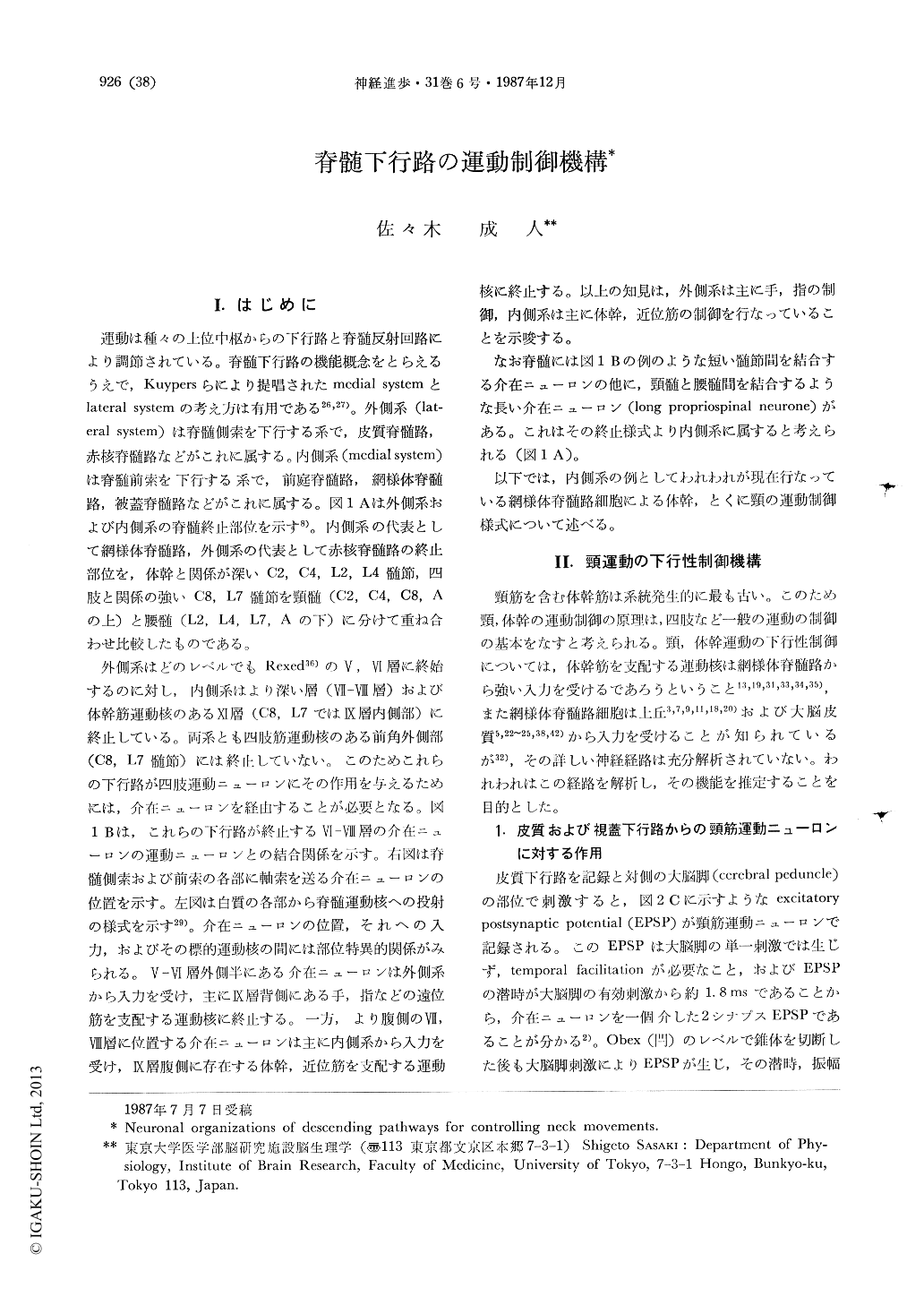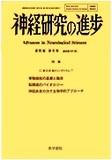Japanese
English
- 有料閲覧
- Abstract 文献概要
- 1ページ目 Look Inside
I.はじめに
運動は種々の上位中枢からの下行路と脊髄反射回路により調節されている。脊髄下行路の機能概念をとらえるうえで,Kuypersらにより提唱されたmedial systemとlateral systemの考え方は有用である26,27)。外側系(lateral system)は脊髄側索を下行する系で,皮質脊髄路,赤核脊髄路などがこれに属する。内側系(medial system)は脊髄前索を下行する系で,前庭脊髄路,網様体脊髄路,被蓋脊髄路などがこれに属する。図1Aは外側系および内側系の脊髄終止部位を示す8)。内側系の代表として網様体脊髄路,外側系の代表として赤核脊髄路の終止部位を,体幹と関係が深いC2,C4,L2,L4髄節,四肢と関係の強いC8,L7髄節を頸髄(C2,C4,C8,Aの上)と腰髄(L2,L4,L7,Aの下)に分けて重ね合わせ比較したものである。
外側系はどのレベルでもRexed36)のV,VI層に終始するのに対し,内側系はより深い層(VII-VIII層)および体幹筋運動核のあるXI層(C8,L7ではIX層内側部)に終止している。両系とも四肢筋運動核のある前角外側部(C8,L7髄節)には終止していない。このためこれらの下行路が四肢運動ニューロンにその作用を与えるためには,介在ニューロンを経由することが必要となる。
Dorsal neck motoneurones innervating splenius (SPL) and biventer cervicis and complexus (BCC) muscles received disynaptic excitatory effects after stimulation of the tectum and the pyramid in cats. These effects were mediated by reticulospinal neurones (RSNs) in the nucleus reticularis pontis caudalis (NRPC) and the nucleus reticularis gigantocellularis (NRG). While a majority of RSNs received monosynaptic excitatory inputs from the tectal and pyramidal volleys, RSNs in the NRPC and those in NRG differed in the following points. The majority of RSNs in the NRPC received a larger input from the tectum than from the pyramid, and descended in the ipsilateral ventral funiculus in the C3 segment. RSNs in the NRG, in contrast, had a stronger input in general from the pyramid than from the tectum and descended in the ventrolateral or lateral funiculus of the ipsilateral side, or contralateral funiculi in the C3 segment.

Copyright © 1987, Igaku-Shoin Ltd. All rights reserved.


